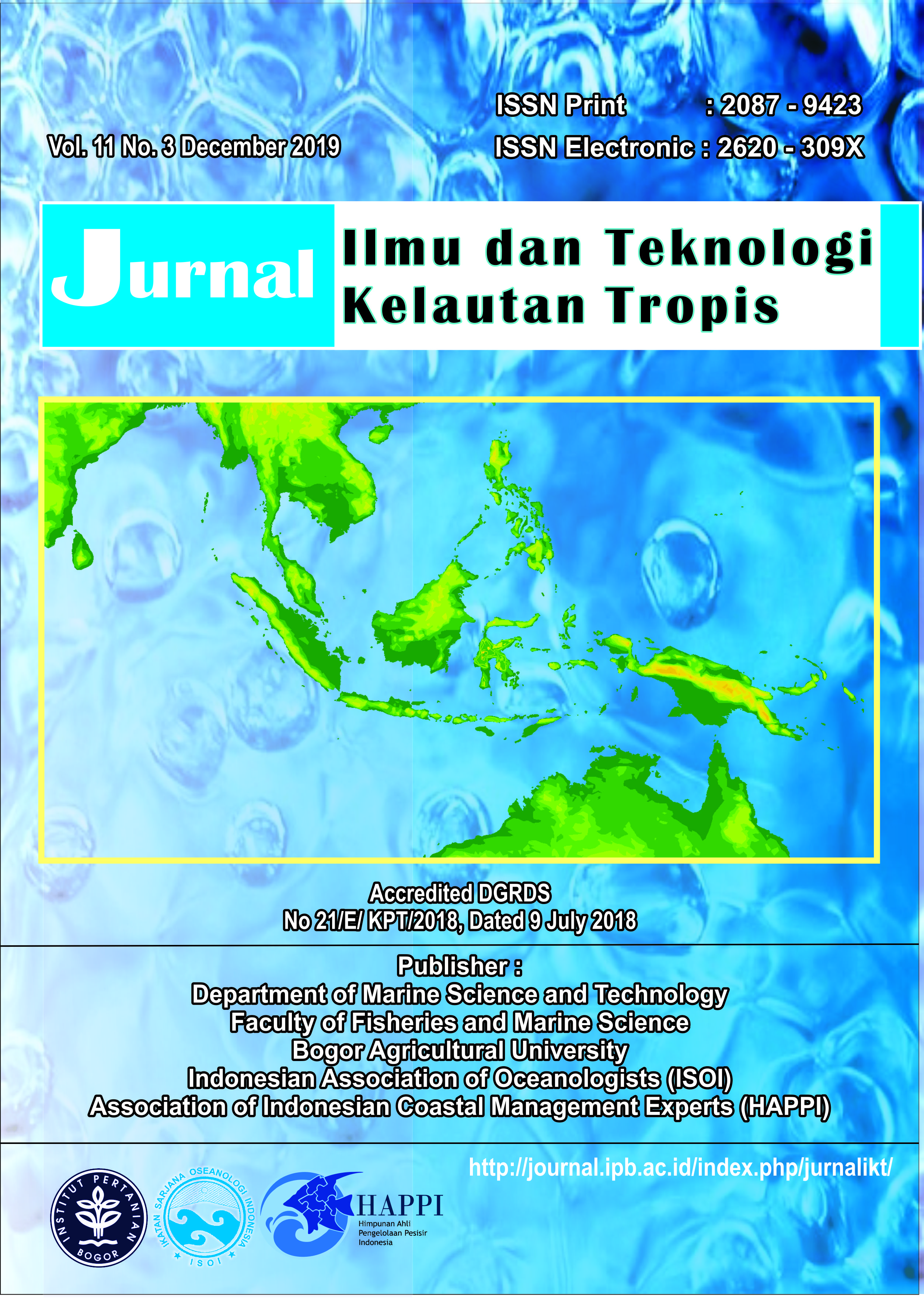EFFECT OF 17β-ESTRADIOL HORMONE ADMINISTRATION ON THE DOG CONCH’S Laevistrombus turturella GONAD DEVELOPMENT
Abstract
Dog conch Laevistrombus turturella is captured intensively, therefore, their population is decline. The dog conch culture is needed to maintain their population. The technology towards conch reproduction is still not developed yet in Indonesia. The 17β-estradiol hormone in conch and some mollusks has been stated by some researcher yet its main role in conch reproduction process has not widely known. The study about the addition of 17β-estradiol hormone in accelerating gonad development has never been reported. The aim of this study was to evaluate the impact of the addition of 17β-estradiol against dog conch’s gonad development. This study used three treatments for three groups of dog conch those were without injection (P1), injection by 30 µL of corn oil mixed with absolute ethanol (P2), and 30 µL of 17β-estradiol stock solution (P3). After injection, the dog conch was reared in pens culture in their natural habitat for 30 days. This study showed that the injection of a 17β-estradiol solution (P3) stimulated the dog conch’s gonad development as evidenced by greater oocyte mean diameter than another treatment. The mean of gonadal weight and GSI on P3 treatment was also higher than treatments P1 and P2. SDS-PAGE analysis showed that dog conch’s hemolymph has several kinds of proteins with varying molecular weights. Proteins with a molecular weight of 54-55 kDa are predicted as dog conch’s vitellogenin.
Authors
The author submitting the manuscript must understand and agree that the copyright of the article manuscript must be submitted/transferred to the Jurnal Ilmu dan Teknologi Kelautan Tropis. This work is licensed under the Creative Commons Attribution-ShareAlike 4.0 (CC BY-SA) International License in which the Author and Reader can copy and redistribute the material in any media or format, and remix, modify and build material for any purpose, but they must provide appropriate credit (citing articles or content), provide a link to the license, and indicate whether there is a change. If you mix, change, or create material, you must distribute your contribution under the same license as the original.


